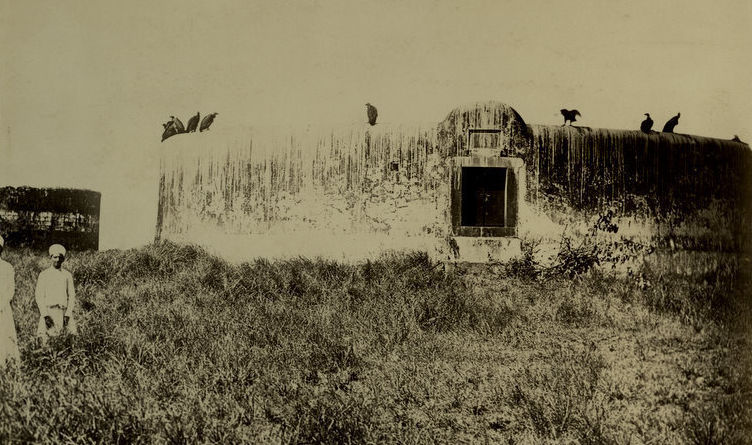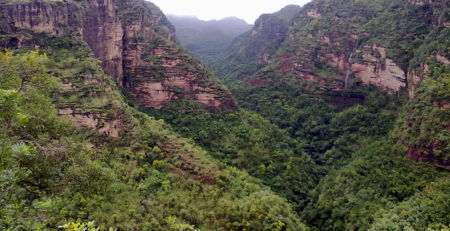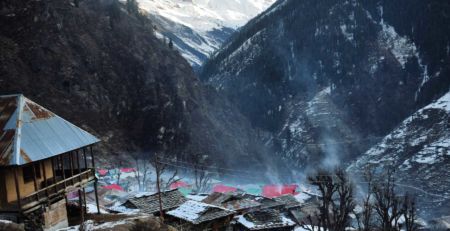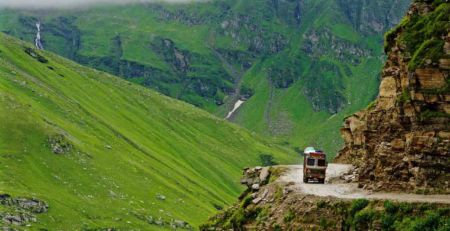Tower of Silence, Sky Burial and Birds of Prey
A look at the Parsi Tower of Silence, the ritual of Sky Burial, the legends and rationale behind it and the link to the Birds of Prey.
Sky burial is the practice of ritualistically leaving the dead as food for the birds of prey and Mother Nature. Sounds gruesome doesn’t it? There must be some rationale behind all this, no? Let’s try and understand this better.
The Bird of Prey and The Doors
Have you heard the song “Bird of Prey” by Jim Morrison and The Doors? Haunting, evocative and mind-numbing isn’t it? Both the lyrics and the music. With Jim Morrison wailing plaintively at the Bird of Prey.
“Bird of Prey, Flying high… In the summer sky. Bird of Prey, Flying high… gently pass on by.
Bird of Prey… Flying high… Am I going to die? Bird of Prey… Flying high… Take me on your flight.”
The song reminds me of the Parsi community’s unique rituals of death and sky burials by some of the Tibetan Buddhists.
The Ritual of Sky Burial and its Rationale
The Zoroastrian religion, which the Parsis follow, considers the dead body to be nasu or unclean. The nasu daeva or ‘ghost of the corpse’ would contaminate everything it came in contact with. As a result, there are strict rules for disposing the dead. Similarly, it considers the Zam (Earth) and Fire (Atar) as sacred. In order to ensure these aren’t polluted, the dead bodies are placed on a high ground exposed to the Sun and scavenger birds. This is also considered the dead person’s final act of charity – feeding another living being with the final possession!
The Mythology & Symbolism
This ritual is symbolic of the soul passing through the “Chinvat” bridge. This is with the help of the eye of the vulture, a bird long regarded as mystical and wise. This concept finds mention in various religions nd mythologies. For example, a similar river which the soul must cross (aided by a cow) is the River Vaitarani in Hindu mythology. Another example is the River Styx in Greek mythology. The ritual, then called Dokhmenashini, originated in the Parsis’ ancient home, Persia. In the 9th century AD, Islam started gaining a strong foothold in Persia. As a result, the Parsis fled from there to protect their faith.
The History
Herodotus in the 5th century BC and even the Byzantine historian Agathias has written about this custom among Iranians. The details are more gruesome. They used to expose the body (male) to dogs and birds of prey. The process involved separation of the bones, wax wrapping and embalming. This was prior to burying of the bodies. Sometimes, they followed a practice of non-exposure of the bodies till the bones could be collected. An exaple of this can be found in the tombs of the Achaemenid emperors. In fact, Zoroaster himself, the founder of the faith, is believed to be interred in a tomb in Balkh, Afghanistan.
Much later, the place of leaving the dead came to be on high “Towers”. These are documented from the 9th century AD only – in the Epistles of Manushchihr where it is called the Astodan (Ossuary).
The Tower of Silence
The Towers are known as Dakhma or the Tower of Silence. They are usually, circular, raised structures, preferably away from habitation. The upper part is exposed to the Sun and birds of prey/ carrion – usually vultures. In the early 19th century, a translator in colonial British India, roughly translated the name as “The Tower of Silence”. This is the origin of the English name.
Structure of the Tower of Silence
The modern-day towers are quite similar in construction. They all have an almost-flat roof ringed in by a higher perimeter. The Parsis leave the bodies here in 3 concentric circles. The outer one is for bodies of men, the next for those of women and the innermost for children. The Sun, the wind and the birds bleach the bodies. This can take about a year. They then collect the bones in the pit at the center (the “Bhandar”) of the Tower of Silence. There, lime ensures gradual disintegration. Rainwater then slowly carries the remains through filters of coal and sand. The outlet leads finally into the sea.
The Process and Society
This entire process is called “Sky-Burial” or “Excarnation”. The upper part of the Tower of Silence is accessible be entered into only by the nasa salar or nusessalars (translated as caretakers of pollutants). A famously class-less society, the Parsis have only one untouchable class, the bearers of the dead bodies in the Tower of Silence.
The modern-day Tower of Silence
A medical school, the Dar ul-Funun, was established in Iran in the 20th century. But, there were no corpses available for study because Islam prohibits the dissection of corpses. So, the students regularly stole corpses from the Towers. Also, the Towers which earlier were built away from habitation, were now in the middle of towns. This was because of the rapid growth of towns. Further, many of the new generation of Zoroastrians found the ritual distasteful. Finally, the Iranian Zoroastrians discontinued the use of the Tower of Silence. They began to bury or cremate their dead. The Towers still continued in Iran, till the Law prohibited it in the 1970s.
The Tower of Silence in India
In India too, the Tower(s) of Silence came to be in the middle of habitation happened in India too. This was again because of rapid urbanization. In Mumbai, the community tried to separate it from the bustle by buying land around the Tower of Silence. They then allowed forests to grow in the land as a form of insulation.
There was another issue here – the use of a particular drug for livestock in India. This was harmful for the vultures who ate animal carrion. More than 95% of the vulture population in India died out by 2008. The authorities banned the drug later. However, the remaining vultures aren’t enough for all the bodies on the Tower of Silence. They use large mirrors now to concentrate sunlight and decompose the bodies faster. But some Parsis have started burying or cremating their dead.
Sky Burial in Tibet
I have heard of a similar practice in Tibet. A couple of years back I had visited the forbidden land of Tibet and the Everest Base Camp. There, in the ruins of an old abandoned monastery, I met an old monk who told me of a ritual that seemed similar.
The Ritual in Tibet
Tibetans have long regarded the Mount Everest as a religious icon – they call it Chomolungma or Mother Goddess of the World. Some Tibetan Buddhists used to bring their dead to a monastery high up in the Himalayas. The monks then cut up the bodies and powdered the bones. They then left this on large stone slabs in the open for the Himalayan vultures to eat. The authorities have now banned this ritual in the RongBuk monastery and others like the Drigun Til, Pabongka, Sera and Larung Gar.
The Rationale and Legend
Sky burial is a very environmentally feasible solution while underlining the philosophy of Anitya or Impermanence. There is also legend that backs this ritual. It goes back to one of the Buddha’s lives, as the Prince Sattva. Legend has it that he once saw a desperately hungry tigress ready to eat her own cubs. Out of deep compassion, the Prince offered his own body to the hungry tigress. Some Tibetans offer their dead bodies to vultures following this example set by the Buddha.
Is there a Parsi Tower of Silence that one can visit now?
There are many Parsi Towers of Silence, still functioning in India. I know of one in Doongarwadi, 300 feet high, in the middle of a forest in the posh Malabar Hills area of Mumbai. There is one in Bangalore and Kolkata too. They are not very much in use now. This is because of the lack of vultures and changing beliefs in the community. You cannot visit the inside of the sites. But it is beautiful even from the outside. In my opinion, the idea is to treat it not as a tourist attraction or a place to see. It is a cultural practice that defines our World, the way it was and is. In addition, there is some pretty deep philosophy to ponder over.
The Importance of preserving this Ritual in memory
Is the practice gruesome? Maybe, to certain sensibilities. But we have to remember that this ritual is a reflection of a centuries-old practice of one of the oldest religions in the World! We have to preserve it in our collective memory.
An interesting cultural/ religious practice that has almost been completely erased even from the collective memory in India is the Chausath Yogini cult of the divine feminine.
Read about some of the other interesting places in Cultural India. Or maybe the places of spiritual interest in India? You could also read about some of the other interesting places in Mysterious India.
And if you are looking to have interesting experiences around the World, visit Beyonder Travel.












Comments (2)
Really a great time traveller and indepth knowledge. Very high IQ . Salute.
Thank you. I’m glad you found it interesting…